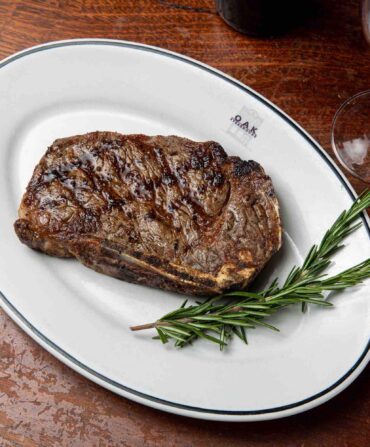Cathy Barrow can make a pie out of just about anything, from rhubarb to rotisserie chicken. A food writer, cooking teacher, and food preservation expert based out of Frederick, Maryland, Barrow has reimagined what a hand pie can be in her newest book, When Pies Fly: Handmade Pastries from Strudels to Stromboli, Empanadas to Knishes. The book is a follow-up to 2018’s James Beard Award nominated Pie Squared: Irresistibly Easy Sweet & Savory Slab Pies, in which she explored the Southern and Midwestern staple, traditionally made on rimmed baking sheets. When Pies Fly takes a global approach to hand pies, taking inspiration from a variety of cuisines for on-the-go recipes, many of which can make good use of leftovers. “So many cultures have been wrapping up food in dough for so long to extend expensive ingredients,” Barrow says. “Wrap it up as a pie, and it’s a totally different dish.” We caught up with Barrow to learn more about her book, her flexible definition of pie, and—of course—to sample one or two.
Your new book has pies in all shapes and sizes. What inspired you to branch out beyond traditional lattice-topped and slab pies?
To write Pie Squared, I baked about 200 pies in five months. You end up with leftover dough and as I was trying to use things up, I made little hand pies and quick galettes. The more I played with the idea, the more I thought, you know, let’s reconsider what the word pie means altogether. That’s how this book came about—what would happen if we expanded the whole notion of what pie is?
What’s the most common mistake of first-time pie makers?
Not keeping things cold enough. Plan your time so there’s plenty of opportunity to move the dough back into the fridge and chill it before you fill it and before you bake it. Fats, usually butter, lard or shortening, need to be super cold so that when the pie goes into the hot oven, you get this explosion of those little nubs of butter. That’s what makes the layers of flaky pastry. If the butter is warm, it smears and you get a dull, flakeless pastry. Make the refrigerator your friend.
Pastry recipes can be intimidating for inexperienced home bakers…
I try to use really precise language [in my recipes]. A lot of times when people talk about making pie dough, they talk about mixing flour and dough together until it looks like pearls, gravel, or cornmeal. I say put it in a food processor and pulse it exactly 15 times and you’ll have what you need. I would love people to feel less daunted by pie, and if that means you buy your pie dough, do it. Once you learn to bake with store-bought pastry and are comfortable with it the next thing that happens is you learn to make the dough yourself.
We have to ask: sweet or savory? And what’s an example of both that you love people can recreate from your recipes?
That’s like choosing a favorite child. It’s down to what I see when I open the fridge door. I think I have a salty tooth as opposed to a sweet one. When it comes to hand pies in particular, I love savory. The kalbi short rib hand pies are delicious and so easy to make. You can buy short ribs already marinated at a lot of Asian grocery stores. With brown sugar-cinnamon pies, I add a little bit of powdered cocoa to make cinnamon go pow. I used to always have a big box of brown sugar-cinnamon Pop-Tarts in my trunk so they hold a very special place in my heart.
What’s your favorite dish to make when you’re not prepping a pie?
Right now, I’m obsessed with sourdough bread. I made my own starter and I’ve been really working at it about once a week. It’s elusive, like playing a perfect round of golf.








